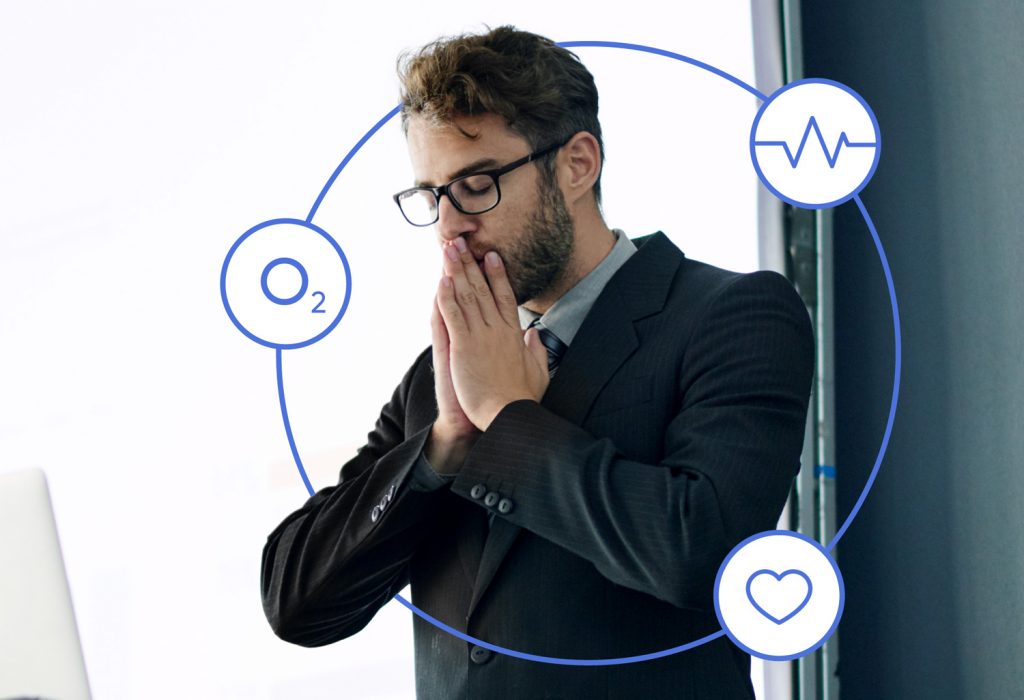By David Birnbaum, Distinguished Staff, Technology Strategy

As I noted in my previous article on the Three Haptic Trends to Watch, haptic wellness will make its way into the mainstream over the next few years. It is an exciting new category of haptics that represents new thinking about haptic use cases, enabled by the convergence of advanced wearable devices, advanced haptics, and interest from consumers in using technology to improve their quality of life. Immersion sees this as a key investment area, and possibly the most important development in the haptic industry since mobile devices with touchscreens first came on the market in 2006.

Wellness is a brand-new category for haptic products.
In the past, haptic feedback, or feedback for the sense of touch, needed to be paired with other modes of feedback to create a good user experience. When you play a console game, you shoot a gun by pulling the trigger (interaction designers would say, you perform an input gesture), you see the gunfire (visual feedback), and you feel a rumble effect (haptic feedback). Note how all of that happens simultaneously to create the impression that you are firing a gun. If you feel rumble alone, with no context from the game, you would not think the haptic feedback feels much like firing a gun. But with the combination of gesture, visuals, audio, and haptics, you can suspend your disbelief and feel immersed in the game. Haptics plays a key role in that process.
The other well-known, conventional haptic use case is simulated button clicks. The input mechanisms in most newer devices are touchscreens or touch surfaces instead of physical buttons. For these interfaces, a haptic pulse (the feedback you get when you press a trackpad to the click of a button on a car’s touchscreen) tells you that you’ve activated some function. While very different from rumble, the haptic feedback still lets you know that you’ve performed an active, intentional gesture and that the system has taken some action in response.
There are other categories of haptic effects, including vibration notifications, authored tracks for videos and movies, audio-haptics, and others. However, they all share a similarity: they’re added to pre-existing user experiences, and they depend on it to have meaning. The motion track for a virtual rollercoaster wouldn’t have meaning without imagery on the screen setting the scene. If your smartwatch buzzes and you don’t see a notification when you look down at the screen, the haptic alert has no meaning and is nothing more than an annoying interruption. In most haptic products until now, a cohesive design across gestures, visuals, audio, and haptics has been the primary goal.
Haptic wellness devices are entirely different.
Haptic wellness devices render touch sensations that stimulate your body in some specific, measurable way, yet without the goal of conveying meaning. This design goal can be called what you feel is what you get. The haptic effects that a WYFIWYG device renders to your skin might be based on your context, your environment, or your bio-signals, but they’re not representing information. Instead, they utilize an understanding of how you react physically and emotionally to touch stimulation to directly influence your mood, your comfort, or your emotional state.
Devices that stimulate touch receptors for the direct purpose of influencing how you feel are not new. From electric massagers to heated blankets, technology that changes how you feel have been around for a very long time. The recent development that has enabled the haptic wellness category is the convergence of battery-powered smart devices, high-resolution touch stimulators, and expanding knowledge of the neuroscience of touch.
Examples of devices that show promise include Apollo, a wearable device that can play haptic patterns tuned to reduce stress. Empathic Technologies markets a device called Doppel that uses a novel haptic approach to help you feel calm and focused by imitating the internal feeling of your own heartbeat. Embr Labs creates a device that can make you feel colder or warmer, improving your comfort, stress, and sleep. While there are studies that show these devices to be effective, more research is needed to understand how haptic wellness works and the limits of its potential.

Next steps for haptic wellness
Since modern wearable devices entered the market a decade ago, they have steadily improved their ability to measure the body. From the first step counters to the latest heart rate sensors in smartwatches, bio-signal measurement has always been a key value of wearables. However, most haptic wellness wearables today do not incorporate bio-signal sensors. Instead, they rely on the user to consciously decide when to activate haptic patterns, and which ones to choose.
The haptic industry is currently working to bridge this gap. Devices are now being developed that will be able to take bio-signal data and use AI techniques to process it, personalize it, and use it to generate real-time haptic signals – creating a tight feedback loop connecting the state of your body to the response of the device. This means that devices will soon proactively generate the right haptics at the right time to help you get faster, better results as you pursue your goals.
If designed well, haptic wellness devices will fade into the background of consumers’ awareness. These new technologies will play a supporting, yet very active, role in people’s daily activities. Wearable devices today often add to our stress by giving us ever more notifications. In contrast, the next generation of wearables with haptic wellness features promises to sense when we are feeling stress and actively work to bring us back to baseline, making us feel comforted, healthy, fulfilled, and free to lead our lives as we’d like to.
More research is needed to advance the design of haptic wellness devices, and the efficacy of haptic wellness devices. However, this is a promising new category of consumer product that has a good chance of becoming part of our daily lives.

